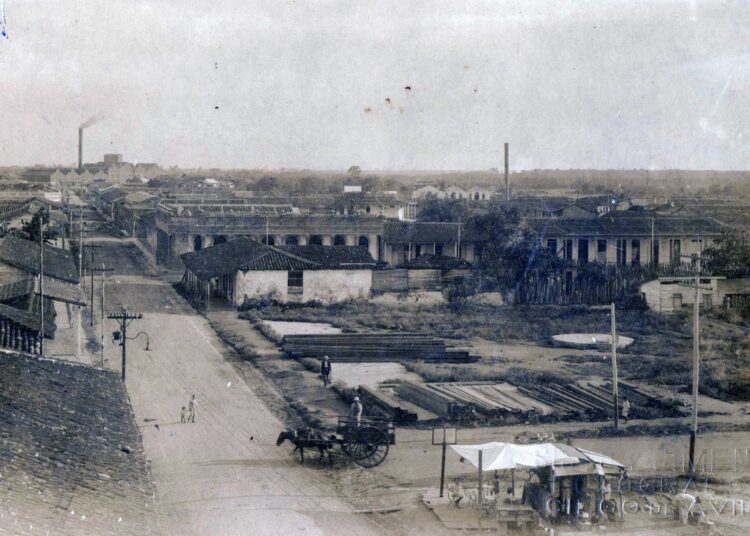The rumbling of the train that covered the route between Júcaro and Morón, as it passed near the Rueda Hotel, startled strangers. Since early morning the movement of numerous horse-drawn carriages was notable. It was very cold on that January 7, 1932 in Ciego de Ávila, the City of Portals.
Perhaps none of this was perceived, after an exhausting trip, by the famous Mexican tenor and actor José Mojica, in the hotel with eclectic architecture owned by the Mezquita brothers, one of the best in the city. The singer needed to be in shape for the presentations at the Teatro Principal, where he would perform “Córdoba en fiesta,” “En donde estás,” “Un beso loco” and “Danza gitana,” among other works, accompanied by U.S. musician and composer Troy Sanders.
Once the show was over, the artists had dinner in a small restaurant, located on the corner of Joaquín Agüero and Marcial Gómez streets, near the coliseum. The owner of La Confronta, the helpful Anacleto Martínez, a native of Galicia, Spain, welcomed them and catered to them personally, with the help of his wife, Celia Gil.
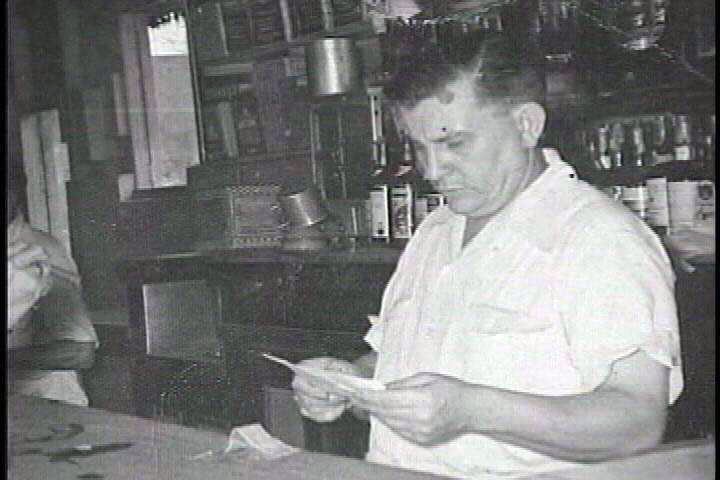
Inaugurated on July 24, 1915, as a kiosk, images from the time show a simple wooden building, covered by an awning, in its first stage. According to the “Efemérides avileñas,” an unpublished text by Silverio Almanza, in 1916 the owner of the establishment’s last name was Pérez Pérez, but the researcher does not report the full name of the merchant; another scholar of the history of the town, Pedro Pablo Lamas, considered that the founder and first owner was Luz Gómez, to whom the City Council leased the land, as early as 1906.
Due to its location, it must have been a preferred location, both for the artists who performed in the Principal and Iriondo theaters and for the workers of the Ciego de Ávila sugar mill, who traveled along Marcial Gómez Street towards the end of the artery, where the sugar factory was located and those who went to the pineapple plantations, also located in the south of the town.
La Confronta opened 24 hours a day and only closed its doors on December 24, which contributed to the increase in its clientele and popularity.

Anacleto Martínez bought the establishment in 1926 and put his personal stamp on it when he began to prepare his special steak, drizzled with a special sauce, the result of his inventiveness. To a glass of vinegar, he added the juice of one lemon, about eight cloves of crushed garlic and let it sit for three or four days. The menu included French fries, rice cooked with black beans and cow’s milk. In addition, they always served beers, soft drinks and wine.
Adjacent to it, on Marcial Gómez Street, was El Bosque Criollo, property of Pedro Isern, also dedicated to the sale of liquor and food. This competition demanded higher quality in the service that Anacleto offered. By the way, some merchants tried to imitate Anacleto’s popular steak in their menus, although the Galician jealously treasured the secret of the ingredients.
I have been told that the musician walked around with his guitar on his back, at a time when he earned his living as a cane cutter in the sugar harvests and wandered around the sugar mills; it is also said that he had already formed his musical group and went from town to town to entertain the dance parties. Bartolomé Maximiliano Moré Gutiérrez was not yet the legendary Benny Moré.
They say that Anacleto did not want to charge him for the bread with steak and the glass of milk. As time went by, after triumphing in Mexico, Benny Moré was in La Confronta to thank him for that generous action. And the story didn’t end there.
“The last time I saw Benny was at the Alibar cabaret; as soon as he noticed my presence he dedicated one of his compositions to me and when I was leaving with family and friends, he did not allow me to pay the bill and told me: ‘I will never forget the attention you showed me, therefore I pay here,’” Anacleto told journalist Tel Pino Sosa, from Juventud Rebelde, in the 1980s.
The jovial Pedro Vargas, Mexican singer and actor, on Wednesday, November 17, 1937, chatted until dawn with announcer Gaspar Pumarejo, the Campo Sisters and pianist Emilio Díaz. It was a memorable evening that Anacleto would never forget and that his daughter, Pilar Martínez Gil, the charismatic “Muñeca,” always remembered with pride.
Libertad Lamarque, the Argentine singer and actress, called “The Tango Empress,” was another of the famous personalities who were hosted by the small restaurant, after she performed at the Teatro Principal, where “the spirit did not know, in ecstasy, whether to surrender to the lullaby of the Buenos Aires lark or contemplate in all its splendor the exquisite ambassador of Argentine women,” according to a chronicler from El Pueblo. Also known as “The Bride of America,” she enjoyed the delicious meal together with her husband and manager, the producer, screenwriter and pianist Alfredo Malerba, on the night of Thursday, January 23, 1945. Jorge Negrete, with the Las Calaveras trio, was there on March 10 of that same year.
The list of illustrious visitors is extensive: it includes Imperio Argentina and Pedro Infante, among the foreigners, and among nationals, comedian Enrique Arredondo and his theater company, Ernesto Lecuona, Bola de Nieve, Rita Montaner, Esther Borja, among others.
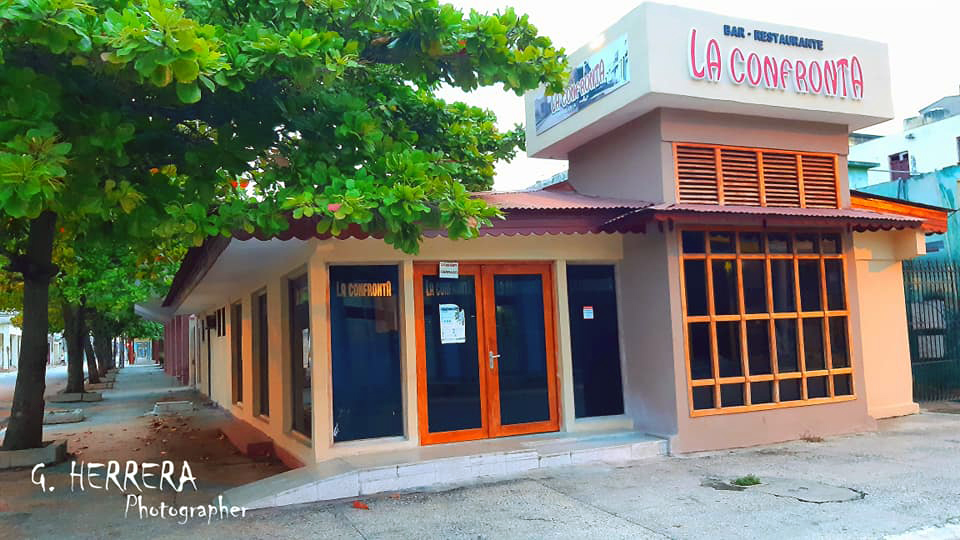
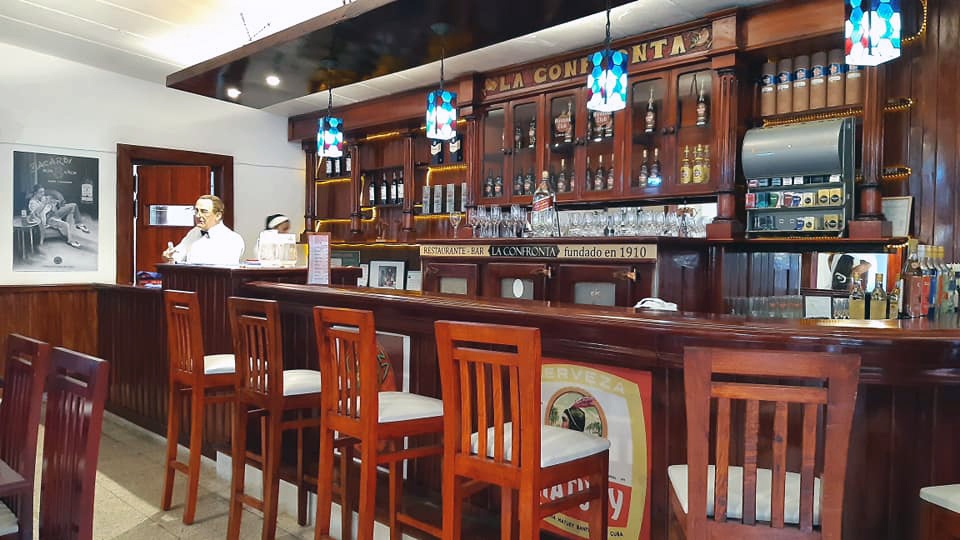
La Bodeguita
Ángel Martínez, a resident of the town of Majagua, west of Ciego de Ávila, was a client of La Confronta. Born in Vueltas, in Las Villas, as a child he learned the trade of merchant in the typical grocery or mixed stores.
This happened in the 1930s before he moved to Havana, where he opened a grocery store on Empedrado Street, near the Plaza de la Catedral, called La Complaciente. After remodeling it, it was renamed La Casa Martínez and on April 26, 1950, it would officially be the legendary Bodeguita del Medio.
Writer and researcher Gina Picart in one of her chronicles tells us about the connection between this internationally renowned site and La Confronta:
“Anacleto’s management model inspired Ángel. Before leaving for the capital to seek his fortune in the 1930s, Martínez became a regular diner and socialite at the La Confronta café and restaurant, located on a busy corner in the city of Ciego de Ávila, where people ate and talked about everything, from Cuba and abroad. That business acquired great fame for the quality of its cuisine and for the welcoming and friendly atmosphere in which diners ‘confronted’ their most dissimilar criteria, which gave rise to the name of the restaurant.
And it is obligatory to mention La Confronta because Martínez himself recognized on multiple occasions that La Bodeguita del Medio was the daughter of the Ciego de Ávila café and restaurant. He made an effort to reproduce in his Havana business the rustic atmosphere and Cuban flavor of that restaurant that always attracted him so much. ‘I only reproduced in Old Havana the Cuban and popular atmosphere of La Confronta in Ciego de Ávila…”
I remember that, when I took some Irish friends to La Confronta, I told them these remembrances. While I was speaking, I briefly looked at the sculpture of Anacleto that welcomes you there, as if the industrious Galician were alive, serving you a drink, waiting for Celia Gil to finish cooking his special steak.
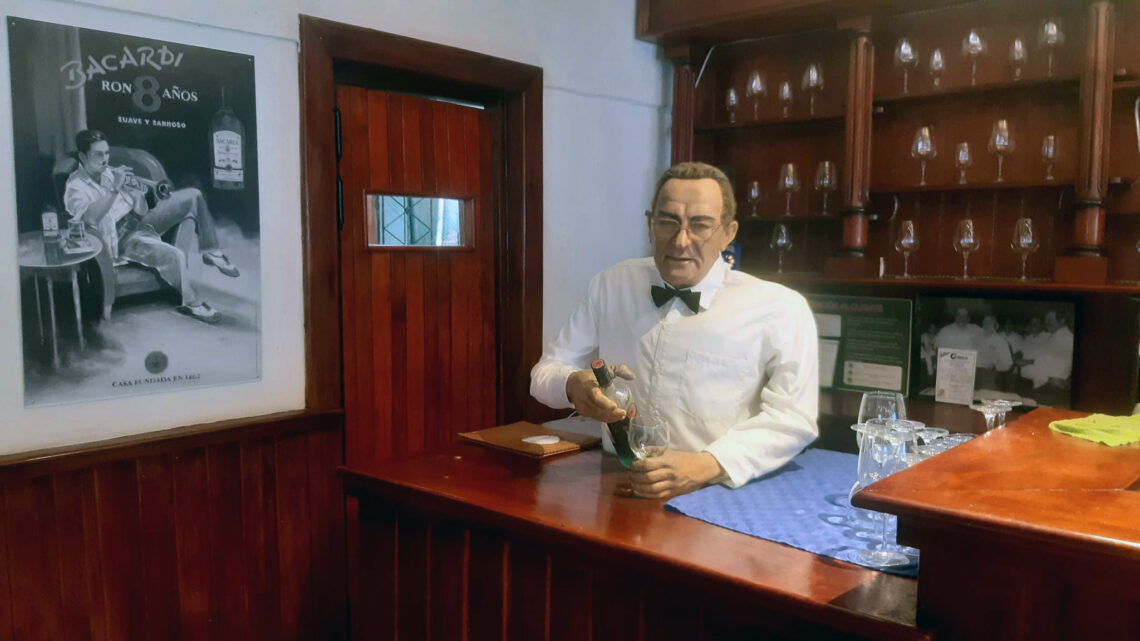
________________________________________
Sources:
Silverio Almanza: Efemérides avileñas, unpublished work, copy in the Coronel Simón Reyes Hernández Provincial Museum of History, in Ciego de Ávila.
Juventud Rebelde
El Pueblo
https://ginapicart.wordpress.com/

